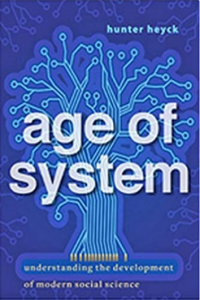Concentration on everyday matters is obviously hard at the moment, so it feels like an achievement to have read Hunter Heyck’s Age of System: understanding the development of modern social science. It was strongly recommended on Twitter by Paul Nightingale, or I wouldn’t have done so – and I found it quite interesting but not earth-shattering.
The key idea is that the post-World War Two decades, approx 1950 to the mid-70s, was a period of ‘high modernism’ in the social sciences. This was the spread in social sciences in the US of a unified, top down, bureaucratic world-view of society as a system whose structures could be analysed by scientists who would then advise decision-makers. This was a period seeing the launch of schools of public administration – specialising in the application of the sciences of decision-making – and also of many interdisciplinary research centres. Another manifestation was the idea of a national economic system, the book argues.
The book then traces the steady shift toward disciplinary specialisms, alongside a stronger emphasis on methodological individualism, from the 1970s on: “What leading social scientists in the 1940s to the mid-1960s saw as wholes, later generations often saw as aggregations of individuals, as is evidenced by the rise of rational choice theories across a range of fields. Interdisciplinary work was fruitful – think Herbert Simon – but unstable as its funding depending on individual program officers at the major foundations; and by 1980 most social science funding in the US came from two sources rather than the same amount of funds from 10 sources a decade earlier.
There are interesting chapters on the idea of rational choice and on the emergence of the concept of modelling (so inbred in me as an economist that it took me a while to get my head around the idea of not having a model): “It is revealing that people always talk of ‘building’ models….. modelers and their audiences think of models as machines. … It is pragmatism formailzed, operationalized and assigned a payoff function.”
Overall, I found this an interesting read but wasn’t sure what it implies. Is this detailed account of US social science of any more than historical interest? Probably, but that’s what I’m left unsure about. The book ends by arguing that the post-1970s ‘neoliberal’ worldview – ‘late modern’ – had an embedded distrust of the possibility of organized intervention in the world. The final sentences are: “The world built on the structure of logic and system and the world built on the logic of contingency and choice are different worlds. Today we are at home in neither. It is time to build anew.” Indeed. ‘Late modernism’ is crumbling too. But how to avoid another trip round the same hamster wheel?

